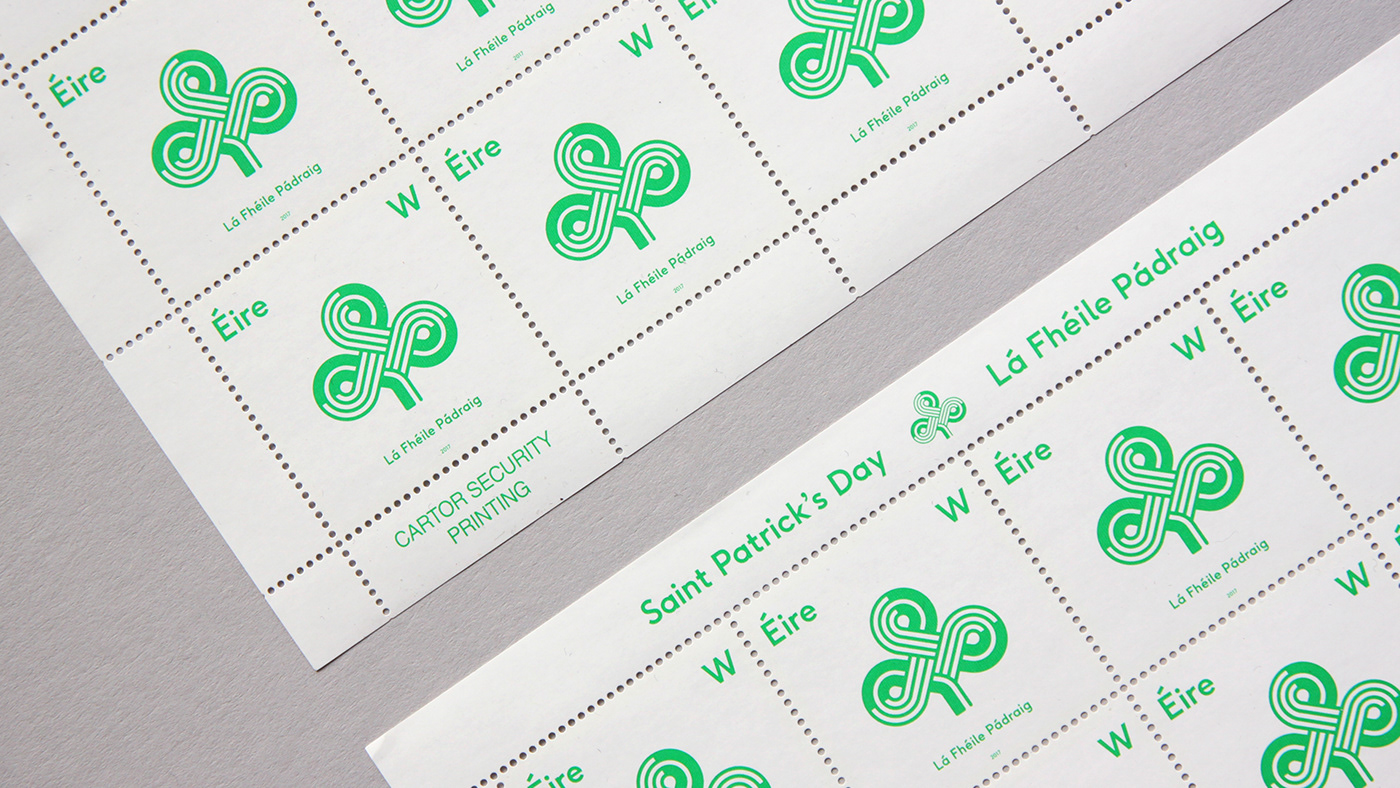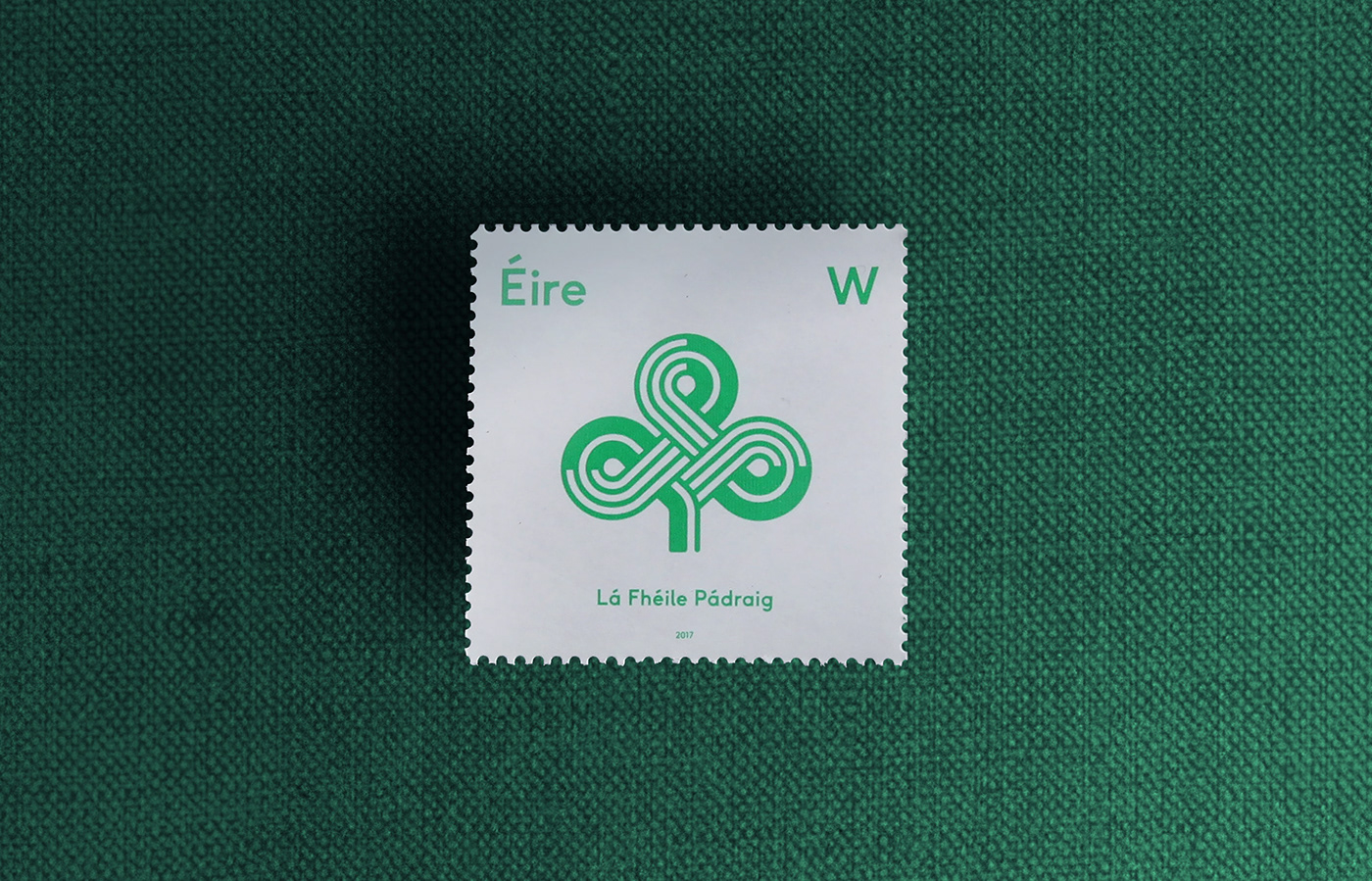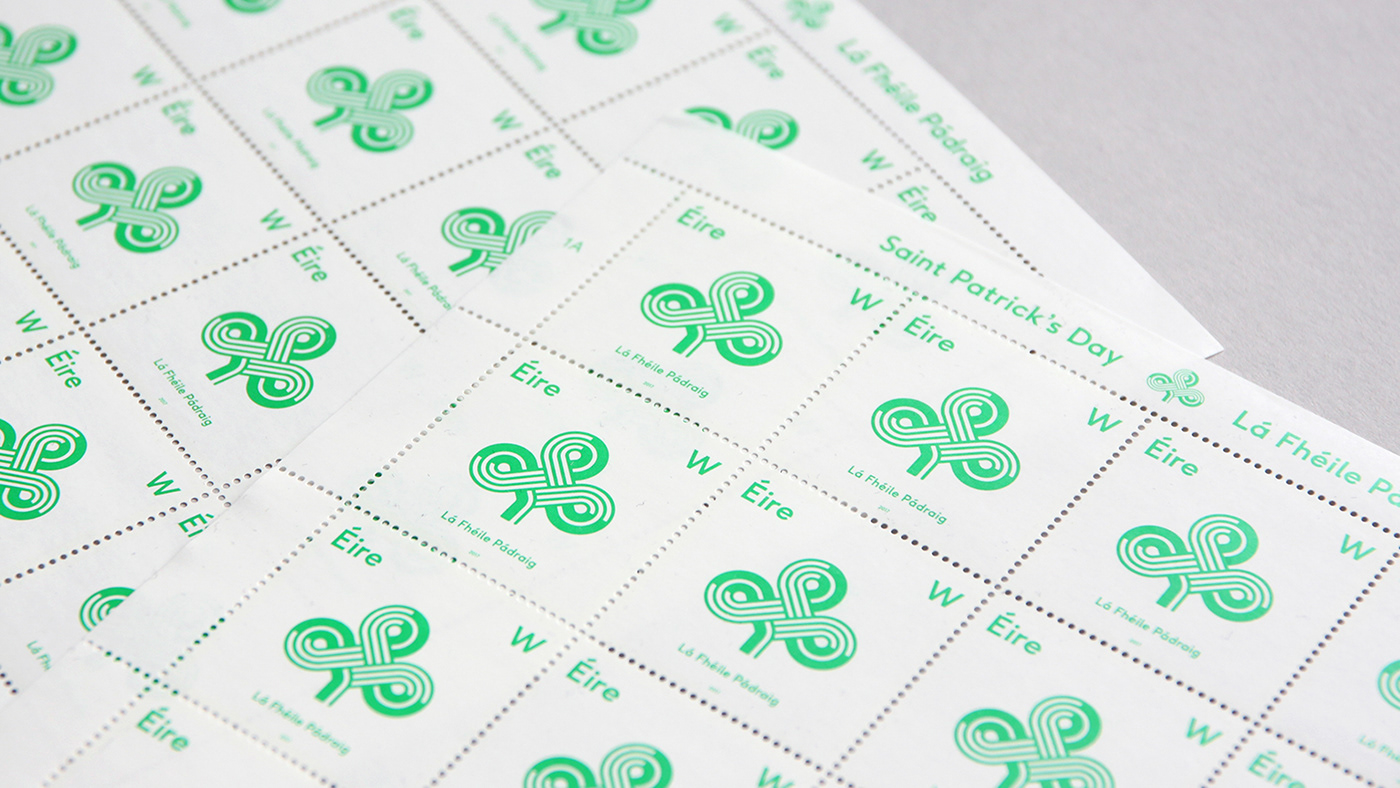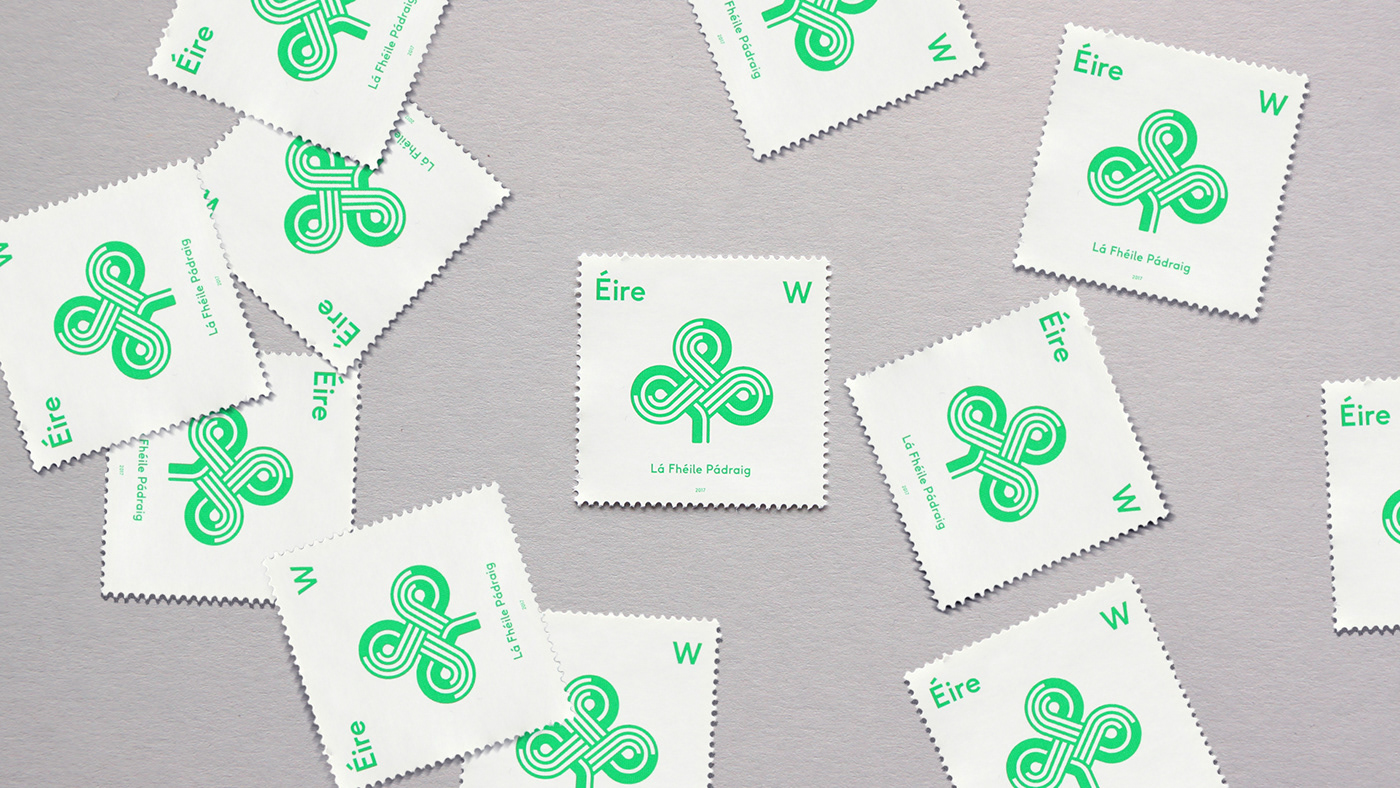
Stamp design for "Lá fhéile Pádraig" or "Saint Patrick's Day" utilising the familiar style often called “interlace, characterised by a continuous, pattern of connected strands or plait work. These knots are most known for their adaptation for use in the ornamentation of Christian monuments and manuscripts, such as the 8th-century St. Teilo Gospels, the Book of Kells and the Lindisfarne Gospels. Most are endless knots, and many are varieties of basket weave knots. Interlace is the most common feature of Celtic art, along with spirals and animal motifs.


It is believed that Saint Patrick was born in Roman Britain in the fourth century, into a wealthy Romano-British family. Patrick came to Ireland to convert the pagan Irish to Christianity. It is said he spent many years evangelising in the northern half of Ireland and converted "thousands". His efforts against the druids were eventually turned into an allegory in which he drove "snakes" out of Ireland, despite the fact that snakes were not known to inhabit the region. The three leaf clover holds significance because, according to legend, Patrick used the three-leaved shamrock to explain the Holy Trinity to Irish pagans.


Technical Details
Date of Issue: February 23, 2017
Value & Quantity: W (102k)
Stamp Size: 36mm x 36mm
Paper: Tullis Russell 102gsm PVA gummed
Colour: Single colour (PMS 354) with phosphor tagging Make - up: Sheetlets of 16 Perforations: 13.3 x 13.3
Printing Process: Lithography Printer: Cartor Security Printing
Date of Issue: February 23, 2017
Value & Quantity: W (102k)
Stamp Size: 36mm x 36mm
Paper: Tullis Russell 102gsm PVA gummed
Colour: Single colour (PMS 354) with phosphor tagging Make - up: Sheetlets of 16 Perforations: 13.3 x 13.3
Printing Process: Lithography Printer: Cartor Security Printing
Photography
by Theresa Feth








